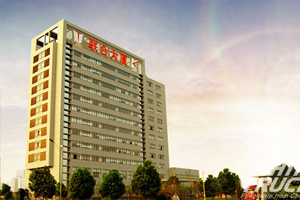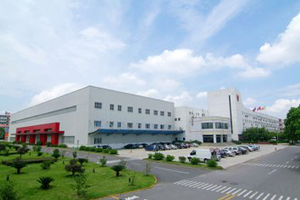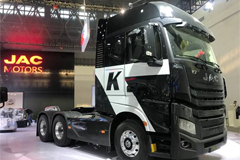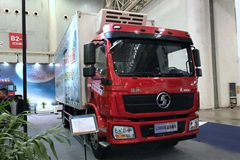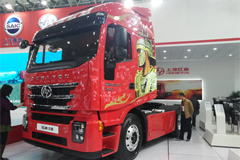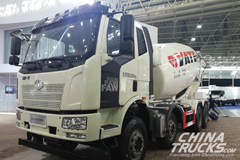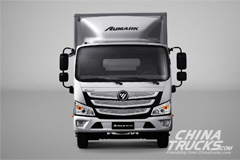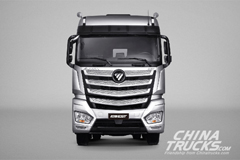Global truck market in the future
The commercial vehicle industry is currently experiencing very strong growth and solid profits after a couple of rather difficult years. As the next downturn is inevitable, all industry players are both satisfying acute market demand as well as constantly improving and securing their long-term competitiveness. Technological developments, changes in value chain structures, and supplier markets need to be closely monitored and appropriate action needs to be taken.Value chain structures in the passenger car have significantly changed over the last decade. These changes and future developments have been analyzed in numerous studies. Such studies on the commercial vehicle industry are so far lacking.
In order to eliminate this "blind spot", Arthur D. Little has decided to conduct a so-called Delphi study "The Future of Trucks", focussing on the heavy duty commercial vehicle industry.
The main findings regarding key topics such as markets and competitors, technology, OEM core competencies, value chain structures, and OEM-supplier cooperation are summarized on the following pages.
Market and Competitors
After strong growth in recent years the global market for heavy commercial vehicles > 6t will stagnate until 2010; more than half of the trucks are produced in emerging markets (China, South America and Eastern Europe)
 |
Before 2015, no safety legislations demanding specific equipments or features are expected; only emission standards will continue to have a significant impact on truck technology
According to Arthur D. Little survey, fleet managers, OEMs, and system suppliers have a rather consistent opinion about key buying criteria. Reliability is the dominating issue in all buying decisions as it has a high impact on life cycle costs and revenues.
 |
In order to meet customer expectations, OEMs and suppliers need to focus on the top priorities reliability and life cycle costs without neglecting other factors, such as comfort and safety features. Due to the shortage of qualified drivers and the high impact of driver qualification on operating costs, comfort is also an important criterion. Safety, of course, is important but most customers are not willing to pay for available features. In terms of comfort and safety, the challenge for truck OEMs is to achieve performance, which is still competitive at the lowest possible cost.
With a few criteria to be met by every truck manufacturer and others not heavily varying, the definition of a clear USP (Unique Sales Point) and to "deliver what you promise" will become a tough challenge for the OEMs in the coming years. Especially as the majority of the OEMs do not have a clearly defined and executed process to ensure that future customer needs are properly addressed and prioritized during the early phases of the product development cycle.Technology
A significant amount of new technologies will be introduced into commercial vehi¬cles over the next 7 years. Electronics and especially driver assistance systems are the areas in which the majority of new technologies and related functionalities will be introduced. However, due to high prices and sometimes-limited perceived bene¬fits a rather slow penetration of these technologies is expected. New technologies in powertrain and chassis will be launched with substantial volume, as they will not be offered as optional equipment or features but are integral part of new vehicles. Examples are emission reduction technologies such as selective catalytic reduction (SCR), exhaust gas recirculation (EGR) or independent front wheel suspension (IFWS).
Focus of product development will shift from adding functionality to reducing vehicle costs and increasing reliability–a different approach regarding innovation is necessary
 |
Trucks will develop evolutionarily with continuous engine improvement and the introduction of independent front wheel suspension and superimposed steering
 |
In addition to strengthening the ability to realize specific functionalities or applications (especially vehicle dynamics), OEMs are moving into the development of platforms and architecture standards. Due to the very high development costs, especially in the case of safety critical software (mandatory for braking systems but also future steering systems and e.g. advanced ACC), this business requires scale. Smaller OEMs will definitely have difficulties in achieving the required scale. There fore, we expect that, in the long run, OEMs will re-focus on specific applications and leave the development of application platforms and architecture standards to specialized companies.
Competencies, Vertical Integration and Value Chain Structures
Generally, OEMs will increasingly focus on systems and functionalities which determine brand positioning and offer differentiation potential. Other systems and functionalities will be outsourced to system suppliers or jointly developed and manufactured with other OEMs.
On the "hardware" side, the engine and the cabin (styling, not manufacturing) are clearly considered as core competence. Also, the chassis is not considered as a potential outsourcing module, because it represents the backbone of vehicle assembly and needs to remain inhouse. In the case of other systems, such as steer¬ing, axles, and gearboxes, differentiation potentials are considered as limited and, therefore, out sourcing is an option for most OEMs. There are numerous examples for cabin modules, steering systems and gearboxes. In the case of axles, so far only Volvo/RVI has outsourced axles to Arvin Meritor, although all OEMs agree that axles are no core competence.
With regard to electronics/SW and functional integration of systems, OEMs con¬sider all functions related to vehicle dynamics as core competence. For example, while gearbox development and manufacturing is not considered as core competence, developing and implementing the gear shifting strategy clearly is. Also, the definition of the E/E architecture is considered as core competence
 |
The core competence criteria alone would point to large business opportunities for system suppliers in the commercial vehicle industry. Nevertheless, a set of other criteria must be fulfilled before OEMs seriously consider outsourcing modules or systems. OEMs generally follow a clearly defined path when deciding on outsourcing.
 |
Due to various other barriers, primarily insufficient supplier competence and limited synergies or economies of scale, respectively, the number of modules potentially outsourced by OEMs is rather limited. In many cases only, at best, half of the OEMs are interested in sourcing a complete module or system
 |
The following cabin modules receive the highest acceptance by OEMs: "Driver Control Module", cockpit module, door modules, and front end module. Also, complete steering systems (below firewall), chassis suspension systems, integrated air supply, intelligent wheel ends, and exhaust systems have potential for outsourcing in the future. Axles most probably will not be outsourced.
 |
OEM-Supplier Cooperation
In future, OEMs will place more emphasis on all activities with direct customer interaction and on activities which generate a sustainable differentiation potential. Therefore, one area of focus will be marketing, sales, and after-sales service. Secondly, OEMs will focus on development and integration of the overall vehicle system and on de¬velopment of specific functionalities with high differentiation potential. The identi¬fication and definition of requirements or seamless integration of fu¬ture (anticipated) customer demands and brand characteristics in the early stages of the product development cycle become crucial.
Development and manufacturing of sub-systems which are not important for differentiation will be outsourced to qualified system suppliers. Therefore, competencies and resources related to the development, manufacturing and assembly of these systems or modules will become less important in the future. On the other hand, competencies to manage system suppliers will become more important. These span from elaboration of precise functional specifications over target costing to a wide ranging integration of suppliers into own business processes.
In engineering there are two competencies which need to be generally strengthened by OEMs in order to be able to optimize overall vehicle systems. As electronics is used in almost each future system, OEMs need to fully understand mechatronics in order to be able to manage system suppliers and get required functionality in a reliable and cost-efficient way. SW development competence is required to enable OEMs to do the overall functional integration especially of vehicle dynamics and engine functions.
Overall, the shift in competencies will lead to a decrease of OEM resources as major system development tasks are transferred to system suppliers. This shift goes hand in hand with the further development of formerly component or sub-system suppliers either into tier-1 system suppliers or into component or technology specialists.
 |
In future, it will not be sufficient to develop a system based on the OEM"s detailed specification. The OEM and system supplier will have to closely cooperate during the entire development cycle and will jointly run through several optimization loops. Ideally, development teams use the same engineering processes and tools and are at least temporarily co-located in one site.
Although OEMs are targeting a long-term partnership with tier-1 suppliers and are often trying to get exclusivity for new technologies and systems, they still want to have a second source. This will be difficult to realize in the case of complex systems, such as independent front wheel suspension or advanced superimposed steering.
Even more important than having a second source is maintaining own competence in order to avoid a dependency from system suppliers. This is often achieved by keeping development and manufacturing of one product line completely inhouse (e.g. military or construction trucks).
 |
Many future systems will be so complex that a single supplier will have difficulties to keep all competencies inhouse. Focus on core competencies is mandatory in order to remain competitive. Leading tier-1 suppliers have recognized that building-up missing or weak competencies would often require too much time and that economies of scale achieved by market leaders can never be reached. As a consequence, partnering with leading companies in other competence fields is the preferred strategic option.
Conclusions – General Recommendations for OEMs
In order to remain competitive in an industry which is becoming increasingly global, European OEMs need to:
Increase product reliability and efficiency (life cycle costs)
Increase engineering effectivity and efficiency:
– Focus more on the early phases of the development cycle (product defini¬tion) and fewer, more customer-oriented innovations
– Review and streamline advanced engineering project portfolio
– Improve innovation marketing
– Improve utilization of global engineering resources through a build-up of global com¬petence centers, thus avoiding redundant competencies; leverage labor cost opportunities, for example in Eastern Europe, and system supplier know-how
Rethink their own manufacturing and sourcing strategies, especially taken into account total operational costs including indirect labor costs when Focus on optimizing their service networksndecid¬ing upon assembly locations (increase quality of service and staff skill levels) and further reduce sales and service costs
Views:0
- 2022 SANY Global Dealer Summit Was Held Successfully Online 2022-03-29
- 2019 SANY Global Dealer Summit Held in Changsha 2019-11-05
- Great Wall Motors Eyes Global Expansion to Remedy the Slowdown in Chinese Market 2019-03-28
- Weichai Set to Strengthen its Presence in the Global Market 2019-03-14
- JAC Was Elected into Global Auto Brands Top 100 2018-03-09
- SAIC Hongyan Global KD Center Lays Its Foundation in Chongqing 2017-11-15
- FAW Ranks 125th in Fortune Global 500 2017-07-28
- Global Environment Facility Supports Guangdong Green Cargo Logistics 2011-05-05
- Global truck market in the futu 2008-05-28
- China's Truck Exports Grew by 30% YOY to 63490 Units in January-February 2022-04-13
Submit Your Requirements, We Are Always At Your Service.
- BYD Stopped the Production of Fuel Vehicles
- Geely Began Test Runs of Green E-methanol Vehicles in Danmark
- 2022 SANY Global Dealer Summit Was Held Successfully Online
- BYD and Shell Partner on EV Charging across China and Europe
- Daimler Truck Significantly Increase Sales, Revenue and Net Profit in 2021
- Scania Year-end Report January-December 2021
- Hyundai Motor and Iveco Group Sign MOU to Explore Future Collaboration
- GAUSSIN Enters China, the Largest Truck Market in the World
- Over 1,200 Hydrogen-powered Vehicles Deployed for the Beijing Winter Olympics
- Chinese New Year Holiday Closure Notice
- China's Truck Exports Grew by 30% YOY to 63490 Units in January-February
- China's New Energy Heavy Trucks Grew Despite an Overall Slump
- Heavy-duty Truck sales in China Fell by 54% to 54,000 units in February
- SINOTRUK Achieves Sales of 27,725 Vehicles in January, 2022
- China’s Domestic Tractor Sales Exceed 40,000 Units in January
- 2021 JAC International Pickup Export Performance
- JAC Achieved a Great Result in 2021
- China's Truck Export in 2021 Reached a 10-year Peak
- Heavy-duty Truck Sales in China Fall 57 Percent on Year in January
- China Recorded Sales of 645000 Tractors in 2021


